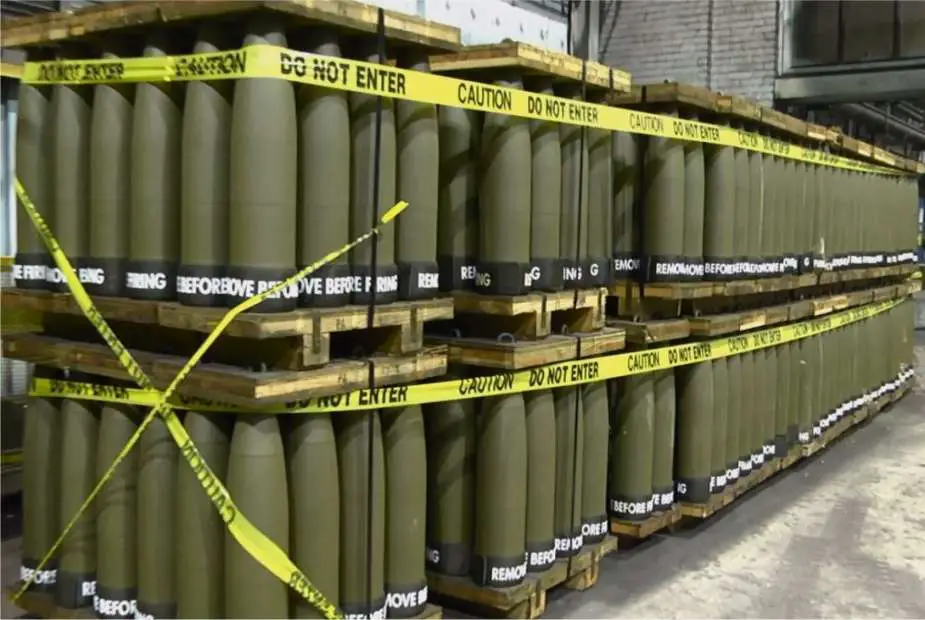Breaking news
United States is ramping up 155mm artillery shell production to support Ukraine.
In response to Ukraine's urgent demand for 155 mm artillery shells following Russia's invasion, the United States is preparing to intensify production, aiming to achieve a monthly rate exceeding 80,000 shells as early as next year. The announcement was made by General Patrick Ryder, the spokesperson for the U.S. Department of Defense, during a briefing at the Pentagon on August 10, 2023.
Follow Army Recognition on Google News at this link

155mm artillery shells at the Scranton Army Ammunition Plant (Picture source: United States DoD )
General Ryder shared that the U.S. has already supplied Ukraine with over 2 million 155 mm artillery shells since the beginning of the conflict. Furthermore, the U.S. has facilitated an increase in production, raising the monthly production rate from 14,000 shells in February 2022 to approximately 24,000 shells per month at present. The objective is to reach the ambitious figure of over 80,000 shells per month next year. He emphasized the crucial role of these munitions in the conflict, highlighting their rapid utilization and the finite nature of stockpiles.
The 155 mm projectile is composed of four parts: the detonating fuse, the projectile itself, the propellant, and the primer. Each shell measures about 60 centimeters (2 feet) in length, weighs about 45 kilograms (100 pounds), and has a diameter of 155 mm (6.1 inches). They are used in howitzer systems, which are large towed artillery pieces recognizable by the range of the firing angle that their barrels can be set to.
Moreover, the 155 mm shells can be configured in various ways. They can be loaded with highly explosive material, use precision-guided systems, penetrate armor, or produce significant fragmentation.
The significance of this type of shell in Ukraine is undeniable. With the Russo-Ukrainian war now more of a positional conflict than a movement-based one, artillery plays a major role. However, artillery is ineffective without shells, and the production of these shells was insufficient to meet the demands of high-intensity warfare. This challenge is being faced by numerous countries, including Russia (with their 152 mm shells). Shell production is being increased by many countries worldwide.
General Ryder also emphasized that while the United States and other nations are indeed bolstering artillery shell production, they are simultaneously continuing deliveries of submunition munitions to Ukraine. This delivery of munitions is highly controversial among various nations worldwide, including in the West.


























